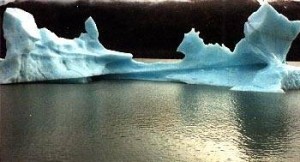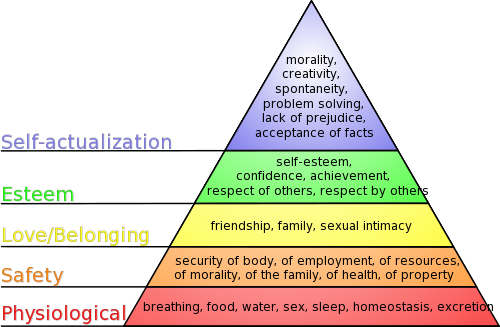NEEDS, WANTS and DESIRES
 There is a vast difference between needs, wants and desires, but there is a logical progression between the three. Although the term “need” is often used in lieu of a want and desire, there is a difference! For example, when my children were younger, they would emphasize their wants/desires with the emphatic, “but dad we NEED a puppy”.
There is a vast difference between needs, wants and desires, but there is a logical progression between the three. Although the term “need” is often used in lieu of a want and desire, there is a difference! For example, when my children were younger, they would emphasize their wants/desires with the emphatic, “but dad we NEED a puppy”.
Needs are something basic, something absolutely necessary. A want on the other hand is a feeling for something you lack. A desire is the craving to apprehend your want. Needs are usually physiological, while wants and desires are more psychological. (Read that again and think about it.)
Much thought and effort has gone into examining the physiological and psychological needs, wants and desires of mankind. You may agree or disagree with some, but that’s good, because that means you’re thinking and evaluating.
One of the oldest written accounts of man’s wants and desires vs. needs is found in the Hebrew telling of creation. In that account, God (Elohim) gave Adam all things necessary for living, including fellowship with Himself. He fulfilled all Adams “needs”. However, Adam also wanted other things like a human companion so Elohim gave him a companion named Eve. Adam and Eve wanted even more. They also wanted the forbidden fruit from the tree of the knowledge of good and evil. (Note: Another fruit in the garden was from the tree of life, which apparently was a physical need.). Their reasoning was that knowledge of good and evil would make them just like Elohim. You see their ‘want’ was a feeling for something they lacked, and their ‘desire’ became a craving to apprehend a want.
Their wants and desires became greed. A simple definition for greed is “To have more than is necessary”. Their action (greed) was a transaction against Elohim, and was punished by banishing them from the garden and access to the tree of life. I’m not belittling the creation account, (actually, I believe it). You see, needs are essentials, but wants and desires can very easily turn into greed. The problem is greed is never satisfied. All of us continually want and desire more. Wants and desires can be either good or bad. Greed takes over when our unbridled desires become your primary motivator making wants and desires appear as needs. (must haves).
EVALUATION of NEEDS and WANTS
A first century Hebrew evangelist by the name of Saul (Paul) wrote, two thousand years ago, that there are three important wants. These basic three are “Faith, Hope and Love, the greatest of these three being love”. So, let’s summarize a few of the human needs and wants presented in those ancient texts:
Now let’s look at some more contemporary writings.
MASLOW’S TRIANGLE
Abraham Maslow was born in 1938 in Brooklyn New York, and in 1943 introduced his work “A theory of human motivation”. He also published a book titled “Motivation and Personality”. During the 1950’s he became the driving force behind the field of Humanistic Psychology, and developed what is caller Maslow’s Triangle. As shown below.
With this triangle Maslow formulated a progression from basic to complex needs. Maslow maintained that once basic needs are met people desire to evolve upward. The levels progress upward and become more psychological, finally the individual reaches the level of self-actualization. The definition of actualization being, “the process of growing and developing as a person to achieve individual potential”
The levels as depicted in his triangle are as follows:
- 1.Physiological needs — food, clothing, shelter, warmth, self esteem.
- 2.Safety needs — Security, Employment of resources, Morality, Health.
- 3. Social needs — Belonging, love, affection, family.
- (The uper two needs are achieved after the lower needs are satisfied.)
- 4. Esteem needs –Confidence, achievement, respect for others.
- 5. Self-actualization needs – Self awareness, personal growth, morality, creativity, lack of prejudice, acceptance of facts. (This level being the highest achievable).
Dr. William Glasser in his book, Control Theory Management, lists five basic human needs. (ISBN 088730-673-X) www.wglasser.com
- 1. Survival.
- 2. Love and belonging.
- 3. Power and recognition.
- 4. freedom.
- 5. Fun.
Note, that unlike Maslow’s triangle Dr. Glasser’s five basic human needs do not show a progression, and are more in line with those in the ancient texts. However, power and recognition fall more in the category of wants.Psychological and psychological needs discussed by Mr.’s Maslow and Glasser may be common to individuals, but are they the universal or basic needs displayed by all past and current cultures, communities, families or work groups.
Absolute Physical Needs.
Remember up in the second paragraph (the one under the glacier photo) you were ask to re-read and think about what was said? Well, lets take a look at some absolute physical needs necessary for mankinds survival.
The definition of physical needs used in our discussion is “something basic, something required”. In other words something absolutely necessary for maintaining life. Therefore, the most fundamental basic physical needs for us humans are often omitted in other discussions. There are at least six, and possibably seven absolute physical needs.
- 1..Water. This is a basic physical need because life as we know it can not exist without water.
- 2. Oxygen, humans and most other life forms can not survive without oxygen.
- 3. Internal Energy to grow and maintain our physical bodies and internal core body temperature. This carbon based energy comes from the food we eat.
- 4. External Energy. This energy comes from the sun. We humans must moderate this energy with clothing and shelter, in order to maintain our internal core temperature.
- 5. Sleep. Humans can not go for very long with out sleep.
- 6. Procreation. There must be males and females of the species to reproduce in kind.
- 7. Communications. Mankind must have some form of communications to survive, be it visual, oral, tactile or another of our senses.
Why this discussion on absolute needs? The main reason is to heighten awareness for conservation and protection of these absolute human needs.
What are your thoughts concerning absolute physical needs? Are there more?
Commonly held needs, wants and desires.
Let’s examine and see if we can we find any commonality of need’s, wants and desires between past and modern cultures excluding the absolute need described above. Here are a few thoughts for discussion gained by looking at indigenous people and cultures. (peace, freedom, hope, spirituality, companionship, human touch, to nurture and be nurtured, self expression, learning, physical work, art, music, love and be loved, community, governance.)
Think about it and develop your own list, and then analyze it in relationship to other deeply held needs, wants and desires. Please let us know what you’ve come up with. (a blog is at the bottom of this chapter.)
DIFFERENT OR THE SAME?
You may have heard the American Indian saying “You don’t know a person until you’ve walked in their moccasin.” Whether that’s an American Indian saying or not, I don’t know. However, in Alaska we use the term mukluk instead of moccasin, but the meaning is still the same.
Harper Lee, in her ‘best selling’ novel, To Kill a Mocking Bird, has Jem and his sister Scout discussing differing types of people. Jem maintained there were four different types, but Scout said “ Naw, Jem, I think there’s just one kind of folks. Folks”.
Boras a good friend and neighbor for over ten years moved to Alaska from Magadan Russia. He has a PhD in economics. We had very interesting discussions on various subjects. Especially on needs, wants and desires. One comment he frequently made in his broken English was “peoples is peoples”. Meaning, we’re all basically the same and all have the same basic needs. Surprisingly, his needs wants and desires very closely paralleled our/my own. I conclude Boras and Scout are right about folks, “Peoples is peoples- just folks!”
Remember our discussion on the importance of vision? In order to effectively assist, help or lead anyone and have them embrace your vision, you must first understand the individual, and their specific needs, wants and desires. Understanding the importance of a vision and understanding needs, wants and desires, is paramount to servant leadership.
The next thing we’re going to look at in helping us understand folks, is a review of personalities, characters, and temperaments. That discussion can be found in the Chapter: ‘Understanding Yourself and Others’ The previous chapter is ‘Why a Vision’.

Leave a Reply
You must be logged in to post a comment.